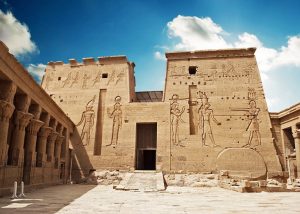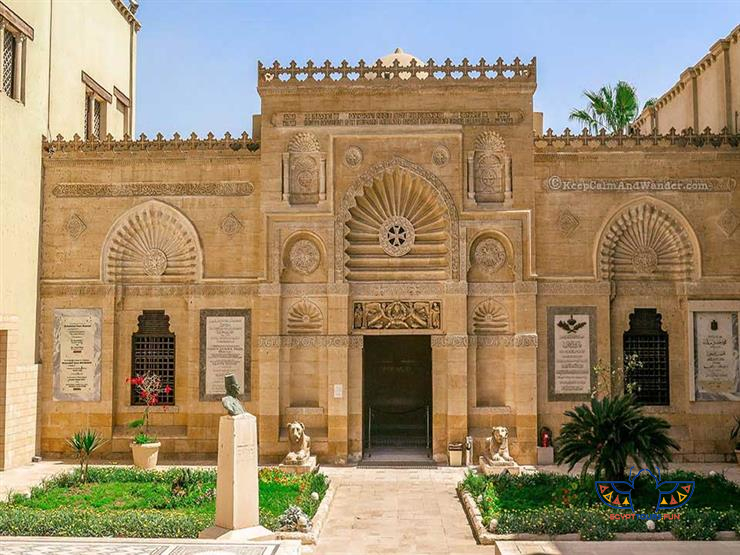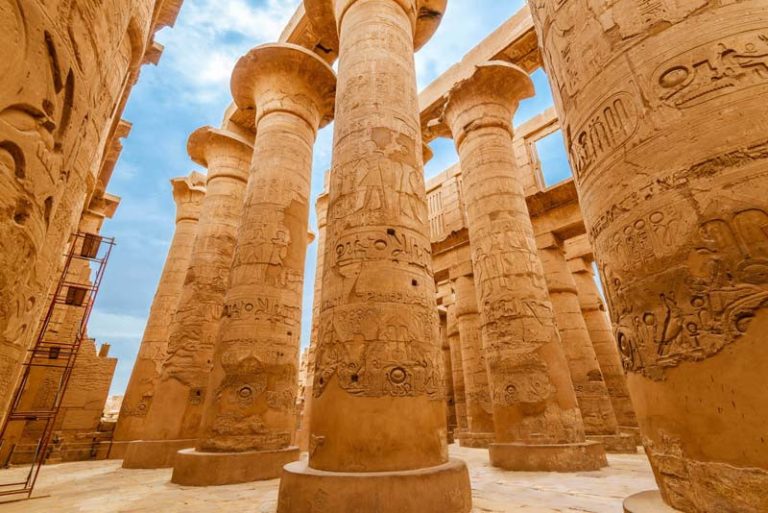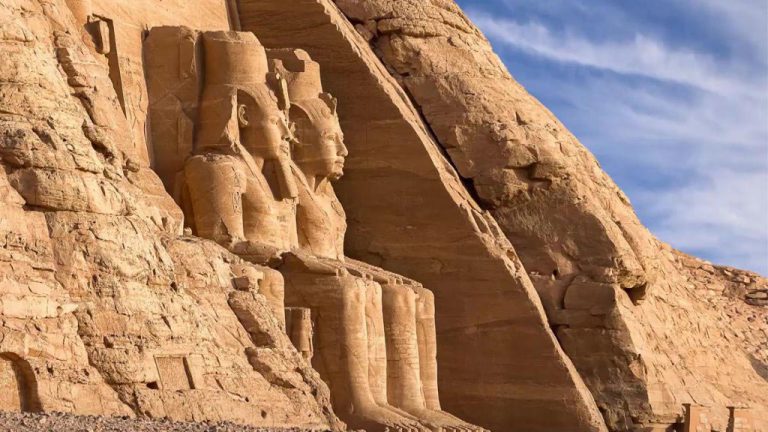Philae Temple: The Enchanting Island Sanctuary of Isis in Egypt
 Nestled on the serene Agilkia Island near Aswan, the Philae Temple is one of Egypt’s most enchanting ancient sites. Dedicated to the goddess Isis, this temple is a masterpiece of Ptolemaic and Roman architecture, surrounded by the tranquil waters of the Nile. Known for its picturesque setting and rich history, the Philae Temple is a must-visit for anyone exploring Egypt’s ancient wonders. Let’s dive into the magic of this island sanctuary and uncover why it captivates travelers from around the world.
Nestled on the serene Agilkia Island near Aswan, the Philae Temple is one of Egypt’s most enchanting ancient sites. Dedicated to the goddess Isis, this temple is a masterpiece of Ptolemaic and Roman architecture, surrounded by the tranquil waters of the Nile. Known for its picturesque setting and rich history, the Philae Temple is a must-visit for anyone exploring Egypt’s ancient wonders. Let’s dive into the magic of this island sanctuary and uncover why it captivates travelers from around the world.
The History of Philae Temple
The Philae Temple dates back to the Ptolemaic era (around 380 BC), with additions made during the Roman period. It was built to honor Isis, the goddess of magic, healing, and motherhood, who was one of the most revered deities in ancient Egypt. The temple complex also includes shrines dedicated to other gods, such as Hathor and Osiris.
Philae was not just a religious center but also a place of pilgrimage for worshippers of Isis. The temple’s walls are adorned with intricate carvings and hieroglyphics that tell stories of ancient rituals, myths, and the divine power of Isis.
The Relocation of Philae Temple
One of the most fascinating aspects of the Philae Temple is its modern history. In the 1960s, the construction of the Aswan High Dam threatened to submerge the temple under the rising waters of the Nile. To save this priceless heritage, UNESCO launched an ambitious project to relocate the entire temple complex to nearby Agilkia Island.
Over the course of a decade, the temple was carefully dismantled, block by block, and reassembled on higher ground. This incredible feat of engineering preserved the temple for future generations and earned it a place on the UNESCO World Heritage List.
Why Visit Philae Temple?
Stunning Location: The temple’s island setting, surrounded by the Nile’s sparkling waters, creates a magical atmosphere that feels like stepping into another world.
Architectural Beauty: The temple’s well-preserved columns, pylons, and reliefs showcase the artistry of ancient Egyptian and Greco-Roman builders.
Sound and Light Show: In the evenings, the temple comes alive with a mesmerizing sound and light show that narrates its history and legends.
Spiritual Significance: As a center of worship for the goddess Isis, Philae Temple offers a unique glimpse into the spiritual life of ancient Egypt.
Highlights of Philae Temple
The Kiosk of Trajan: This iconic Roman-era structure, with its elegant columns and open design, is one of the most photographed spots in the temple complex.
- The Sanctuary of Isis: The inner sanctum, where the sacred statue of Isis was once housed, is a place of profound spiritual energy.
- The Birth House (Mammisi): This section of the temple celebrates the birth of Horus, the son of Isis and Osiris, and is adorned with beautiful carvings.
The Temple of Hathor: A smaller shrine within the complex dedicated to the goddess of love and joy, featuring charming depictions of musicians and dancers.
How to Visit Philae Temple
Philae Temple is located near Aswan, one of Egypt’s most beautiful cities. To reach the temple, visitors take a short boat ride from the mainland to Agilkia Island. The journey itself is part of the experience, offering stunning views of the Nile and the surrounding landscape.
Tips for Your Visit:
Visit early in the morning or late afternoon to avoid the heat and crowds.
Don’t miss the sound and light show, which is available in multiple languages.
Combine your visit with other Aswan attractions, such as the Unfinished Obelisk and the Aswan High Dam.
The Philae Temple is more than just an ancient site; it’s a testament to the enduring legacy of Egyptian civilization and the power of human ingenuity. Whether you’re drawn to its history, architecture, or spiritual significance, a visit to Philae Temple is an unforgettable experience.




